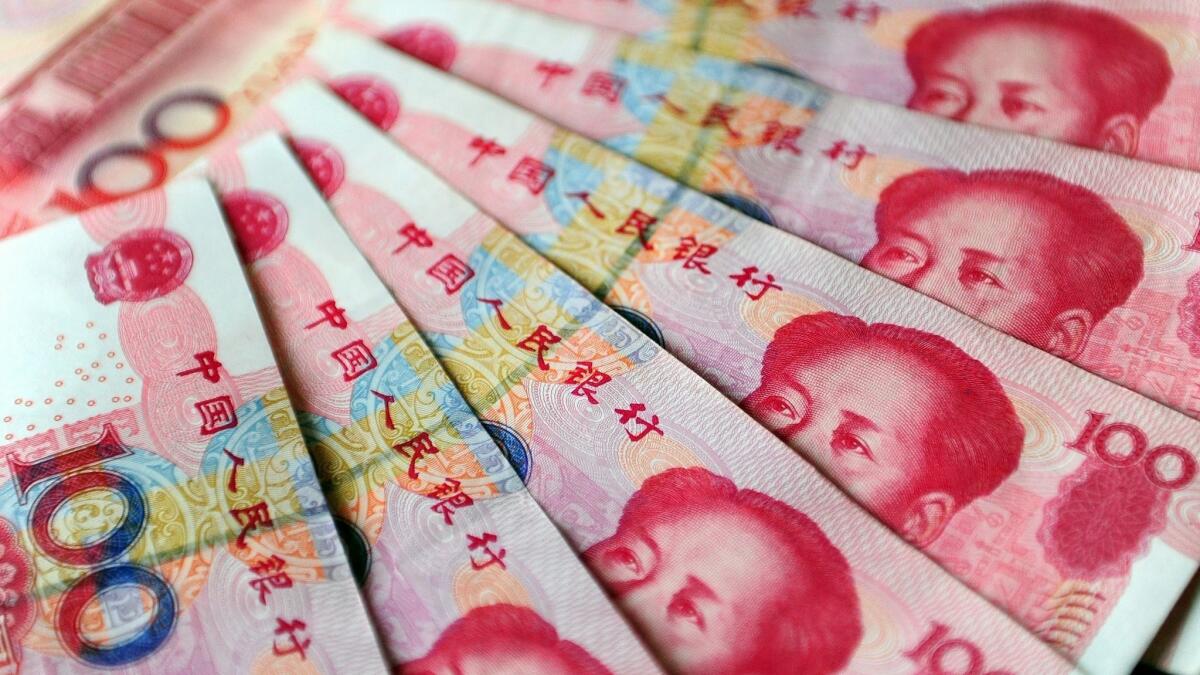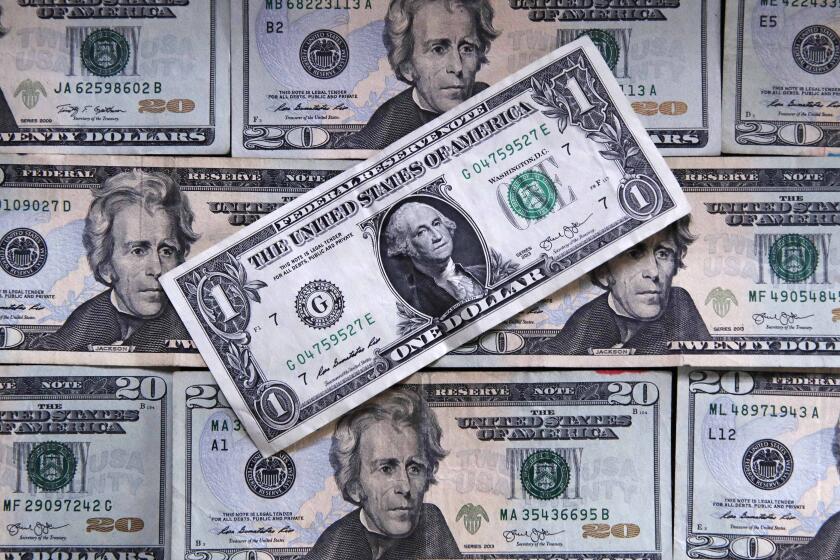U.S. stops short of labeling China a currency manipulator

- Share via
The Treasury Department stopped short of declaring China a currency manipulator in its semiannual report on foreign-exchange rates, averting an escalation of a trade war while serving notice that the United States will closely watch the yuan after its recent slide.
“Of particular concern are China’s lack of currency transparency and the recent weakness in its currency,” Treasury Secretary Steven T. Mnuchin said in a statement. “We will continue to monitor and review China’s currency practices, including through ongoing discussions with the People’s Bank of China.”
Although direct intervention by China’s central bank has recently been “limited,” the United States is “deeply disappointed” that the nation doesn’t disclose its foreign exchange intervention, the Treasury Department said in the report.
No major trade partner was designated a currency manipulator, according to the report, which the Treasury Department released Wednesday. Still, the department dialed up criticism of China’s state-driven economic model.
“Real exchange rate movements in 2018 — particularly the strengthening of the dollar and the decline in China’s currency — would, if sustained, exacerbate persistent trade and current account imbalances,” the report said. It said China’s economic model, “which continues to rely significantly on non-market mechanisms, is posing growing risks to the long-term global growth outlook.”
The decision not to label China a manipulator stands in contrast with public comments made by President Trump, who has repeatedly accused China of gaming the value of the yuan to gain an advantage in trade. Formally declaring China a manipulator wouldn’t have triggered sanctions or other U.S. penalties, but it would have worsened an already-tense relationship between the world’s two biggest economies.
Trump has slapped tariffs on $250 billion worth of Chinese goods, and China has retaliated with tariffs on about $110 billion worth of U.S. products. On top of the escalating trade war, Trump recently accused China of meddling in the nation’s 2016 elections, as well as the upcoming November midterm elections. Earlier on Wednesday, Trump said he plans to withdraw from an agreement that allows Chinese shippers to send products to the United States at discounted rates.
Mnuchin has said since July that the Treasury Department is concerned about the yuan’s recent drop. The currency has slid about 9% against the dollar in the last six months, making it one of the worst-performing Asian currencies this year and raising speculation that China has been deliberately weakening its currency as trade tensions with the United States worsen.
The report released Wednesday said China hasn’t crossed three thresholds set by Congress that determine whether a country should be formally designated a currency manipulator. They include a minimum $20-billion trade surplus with the United States; a current account surplus in excess of 3% of gross domestic product; and repeated interventions in currency markets.
“If they’d found a way to label China, it would have hurt sentiment further,” said Shahab Jalinoos, Credit Suisse Group’s global head of foreign-exchange trading strategy. “But this being a yawn, if anything, it should make markets more comfortable” with emerging market risk.
Monitoring list
Treasury’s currency watch list remained the same, naming China, Japan, South Korea, India, Germany and Switzerland. The report also said:
• The euro appears undervalued for some of the stronger economies in the currency bloc, including Germany, which the Treasury Department said has a responsibility to rebalance global trade.
• South Korea sold $4.1 billion of its currency in the year through June, and the Treasury Department called on Seoul to encourage domestic demand.
• India now meets only one of the three criteria to be labeled a currency manipulator, down from two in the April report. The country could be removed from the monitoring list in April.
• The Treasury Department remains concerned about the persistence of a large trade deficit with Japan.
• The department urges Switzerland to boost transparency of its currency interventions.
• Thailand wasn’t added to the watch list, counter to some currency analysts’ expectations.
Although Trump said in August his administration was looking closely at the criteria it uses to review currency policies, the Treasury Department didn’t change its thresholds. It won’t expand the number of countries it scrutinizes, which in April it said it was considering. The department continues to review currency policies under both 1988 and 2015 trade acts.
Mohsin and Mayeda write for Bloomberg.
More to Read
Inside the business of entertainment
The Wide Shot brings you news, analysis and insights on everything from streaming wars to production — and what it all means for the future.
You may occasionally receive promotional content from the Los Angeles Times.










